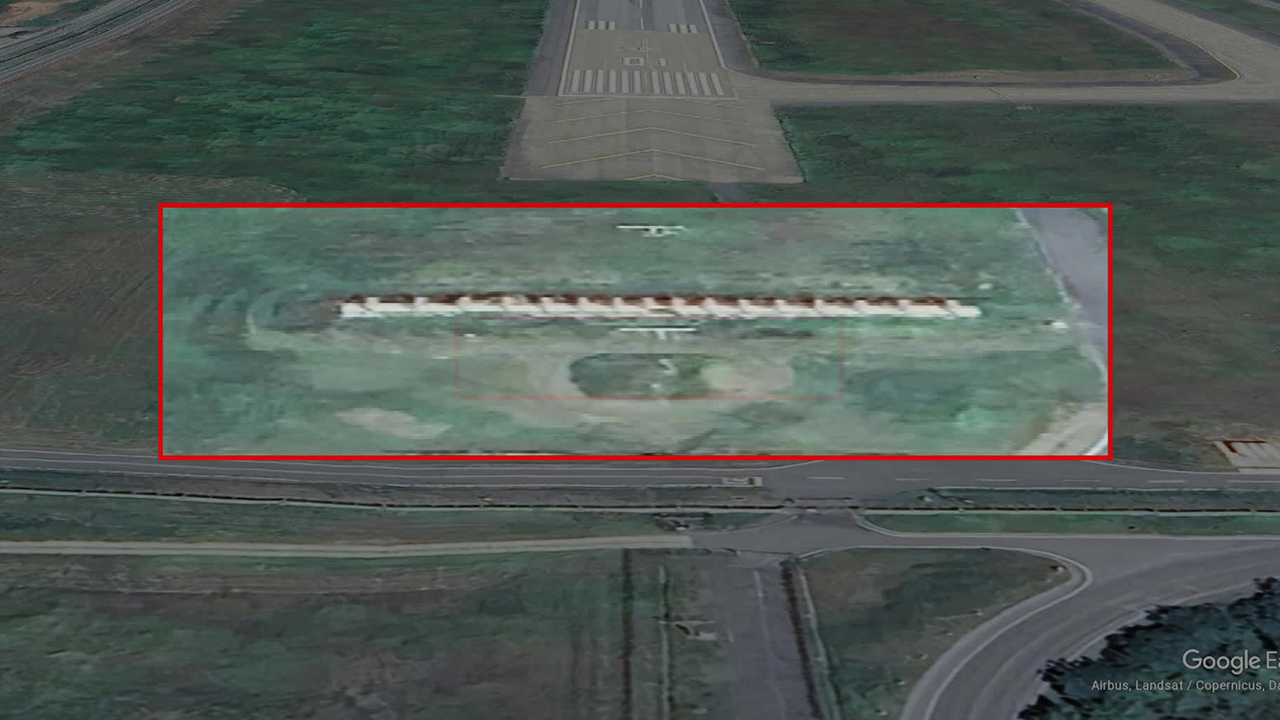Localizer’s role in S. Korea’s aviation disaster
입력 2024.12.30 (22:48)
읽어주기 기능은 크롬기반의
브라우저에서만 사용하실 수 있습니다.
[Anchor]
Hello everyone.
This is a special KBS 9 o'clock news.
Among the 181 passengers, only two survived.
Today (12.30), we will focus on the cause of the largest aviation disaster in South Korea's history and the questions surrounding it.
First, let's look at the analysis that points to the collision with the equipment, specifically the 'localizer', as a significant cause of the accident before the aircraft headed towards the airport's outer wall.
At night or in poor visibility, pilots sometimes attempt to land using only their instruments.
In this case, the localizer helps the aircraft align with the runway centerline by sending out radio signals to ensure a safe landing.
But why has the localizer, which is also installed at other airports, been singled out as the primary cause of the accident this time?
First, reporter Oh Dae-sung will analyze this.
[Report]
This is a satellite image of the southern end of the runway at Muan Airport taken in September.
There is a structure not far from the end of the runway.
This is the localizer, a landing guidance safety facility.
In photos taken before the disaster, the localizer inside the airport boundary wall can be seen.
A concrete structure is protruding from a mound of dirt, with an antenna installed on top of it.
The total height is about 4 meters.
However, after the accident, only traces of the broken structure remain.
The Jeju Air passenger plane declared an emergency and changed its landing direction by 180 degrees, entering the runway but failed to reduce speed, crashing into the localizer structure and exploding.
The structure was located 264 meters from the end of the runway, with the boundary wall 59 meters further back.
Some experts suggest that if there had not been a solid concrete structure beyond the runway, the passenger plane might have been able to run further and stop in an open area, potentially reducing the damage.
[Song Byeong-heum/Emeritus Professor, Korea Aerospace University: "If there is a localizer antenna, it should be designed to be flexible, like a straw, so that it breaks upon impact. While there will be some damage, it should be minimal. There are airports both abroad and in our country that have implemented this. However, there is no need to do it that way."]
Abroad, it is further argued that there should not be any structures in that location, identifying it as a decisive cause of the disaster.
[Geoffrey Thomas/Aviation Industry Analyst/Airline News: "I haven't done the research but I would say that absolutely contravenes international standards to have that wall there. No question about it."]
In 2015, in Japan, an Asiana Airlines passenger plane veered off the runway and collided with an antenna, but there were no solid obstacles in front of the runway, and there were no fatalities.
The Ministry of Land, Infrastructure and Transport stated that further investigation is needed to determine how much the localizer affected the accident.
This is KBS News, Oh Dae-sung.
Hello everyone.
This is a special KBS 9 o'clock news.
Among the 181 passengers, only two survived.
Today (12.30), we will focus on the cause of the largest aviation disaster in South Korea's history and the questions surrounding it.
First, let's look at the analysis that points to the collision with the equipment, specifically the 'localizer', as a significant cause of the accident before the aircraft headed towards the airport's outer wall.
At night or in poor visibility, pilots sometimes attempt to land using only their instruments.
In this case, the localizer helps the aircraft align with the runway centerline by sending out radio signals to ensure a safe landing.
But why has the localizer, which is also installed at other airports, been singled out as the primary cause of the accident this time?
First, reporter Oh Dae-sung will analyze this.
[Report]
This is a satellite image of the southern end of the runway at Muan Airport taken in September.
There is a structure not far from the end of the runway.
This is the localizer, a landing guidance safety facility.
In photos taken before the disaster, the localizer inside the airport boundary wall can be seen.
A concrete structure is protruding from a mound of dirt, with an antenna installed on top of it.
The total height is about 4 meters.
However, after the accident, only traces of the broken structure remain.
The Jeju Air passenger plane declared an emergency and changed its landing direction by 180 degrees, entering the runway but failed to reduce speed, crashing into the localizer structure and exploding.
The structure was located 264 meters from the end of the runway, with the boundary wall 59 meters further back.
Some experts suggest that if there had not been a solid concrete structure beyond the runway, the passenger plane might have been able to run further and stop in an open area, potentially reducing the damage.
[Song Byeong-heum/Emeritus Professor, Korea Aerospace University: "If there is a localizer antenna, it should be designed to be flexible, like a straw, so that it breaks upon impact. While there will be some damage, it should be minimal. There are airports both abroad and in our country that have implemented this. However, there is no need to do it that way."]
Abroad, it is further argued that there should not be any structures in that location, identifying it as a decisive cause of the disaster.
[Geoffrey Thomas/Aviation Industry Analyst/Airline News: "I haven't done the research but I would say that absolutely contravenes international standards to have that wall there. No question about it."]
In 2015, in Japan, an Asiana Airlines passenger plane veered off the runway and collided with an antenna, but there were no solid obstacles in front of the runway, and there were no fatalities.
The Ministry of Land, Infrastructure and Transport stated that further investigation is needed to determine how much the localizer affected the accident.
This is KBS News, Oh Dae-sung.
■ 제보하기
▷ 카카오톡 : 'KBS제보' 검색, 채널 추가
▷ 전화 : 02-781-1234, 4444
▷ 이메일 : kbs1234@kbs.co.kr
▷ 유튜브, 네이버, 카카오에서도 KBS뉴스를 구독해주세요!
- Localizer’s role in S. Korea’s aviation disaster
-
- 입력 2024-12-30 22:48:58

[Anchor]
Hello everyone.
This is a special KBS 9 o'clock news.
Among the 181 passengers, only two survived.
Today (12.30), we will focus on the cause of the largest aviation disaster in South Korea's history and the questions surrounding it.
First, let's look at the analysis that points to the collision with the equipment, specifically the 'localizer', as a significant cause of the accident before the aircraft headed towards the airport's outer wall.
At night or in poor visibility, pilots sometimes attempt to land using only their instruments.
In this case, the localizer helps the aircraft align with the runway centerline by sending out radio signals to ensure a safe landing.
But why has the localizer, which is also installed at other airports, been singled out as the primary cause of the accident this time?
First, reporter Oh Dae-sung will analyze this.
[Report]
This is a satellite image of the southern end of the runway at Muan Airport taken in September.
There is a structure not far from the end of the runway.
This is the localizer, a landing guidance safety facility.
In photos taken before the disaster, the localizer inside the airport boundary wall can be seen.
A concrete structure is protruding from a mound of dirt, with an antenna installed on top of it.
The total height is about 4 meters.
However, after the accident, only traces of the broken structure remain.
The Jeju Air passenger plane declared an emergency and changed its landing direction by 180 degrees, entering the runway but failed to reduce speed, crashing into the localizer structure and exploding.
The structure was located 264 meters from the end of the runway, with the boundary wall 59 meters further back.
Some experts suggest that if there had not been a solid concrete structure beyond the runway, the passenger plane might have been able to run further and stop in an open area, potentially reducing the damage.
[Song Byeong-heum/Emeritus Professor, Korea Aerospace University: "If there is a localizer antenna, it should be designed to be flexible, like a straw, so that it breaks upon impact. While there will be some damage, it should be minimal. There are airports both abroad and in our country that have implemented this. However, there is no need to do it that way."]
Abroad, it is further argued that there should not be any structures in that location, identifying it as a decisive cause of the disaster.
[Geoffrey Thomas/Aviation Industry Analyst/Airline News: "I haven't done the research but I would say that absolutely contravenes international standards to have that wall there. No question about it."]
In 2015, in Japan, an Asiana Airlines passenger plane veered off the runway and collided with an antenna, but there were no solid obstacles in front of the runway, and there were no fatalities.
The Ministry of Land, Infrastructure and Transport stated that further investigation is needed to determine how much the localizer affected the accident.
This is KBS News, Oh Dae-sung.
Hello everyone.
This is a special KBS 9 o'clock news.
Among the 181 passengers, only two survived.
Today (12.30), we will focus on the cause of the largest aviation disaster in South Korea's history and the questions surrounding it.
First, let's look at the analysis that points to the collision with the equipment, specifically the 'localizer', as a significant cause of the accident before the aircraft headed towards the airport's outer wall.
At night or in poor visibility, pilots sometimes attempt to land using only their instruments.
In this case, the localizer helps the aircraft align with the runway centerline by sending out radio signals to ensure a safe landing.
But why has the localizer, which is also installed at other airports, been singled out as the primary cause of the accident this time?
First, reporter Oh Dae-sung will analyze this.
[Report]
This is a satellite image of the southern end of the runway at Muan Airport taken in September.
There is a structure not far from the end of the runway.
This is the localizer, a landing guidance safety facility.
In photos taken before the disaster, the localizer inside the airport boundary wall can be seen.
A concrete structure is protruding from a mound of dirt, with an antenna installed on top of it.
The total height is about 4 meters.
However, after the accident, only traces of the broken structure remain.
The Jeju Air passenger plane declared an emergency and changed its landing direction by 180 degrees, entering the runway but failed to reduce speed, crashing into the localizer structure and exploding.
The structure was located 264 meters from the end of the runway, with the boundary wall 59 meters further back.
Some experts suggest that if there had not been a solid concrete structure beyond the runway, the passenger plane might have been able to run further and stop in an open area, potentially reducing the damage.
[Song Byeong-heum/Emeritus Professor, Korea Aerospace University: "If there is a localizer antenna, it should be designed to be flexible, like a straw, so that it breaks upon impact. While there will be some damage, it should be minimal. There are airports both abroad and in our country that have implemented this. However, there is no need to do it that way."]
Abroad, it is further argued that there should not be any structures in that location, identifying it as a decisive cause of the disaster.
[Geoffrey Thomas/Aviation Industry Analyst/Airline News: "I haven't done the research but I would say that absolutely contravenes international standards to have that wall there. No question about it."]
In 2015, in Japan, an Asiana Airlines passenger plane veered off the runway and collided with an antenna, but there were no solid obstacles in front of the runway, and there were no fatalities.
The Ministry of Land, Infrastructure and Transport stated that further investigation is needed to determine how much the localizer affected the accident.
This is KBS News, Oh Dae-sung.
-
-

오대성 기자 ohwhy@kbs.co.kr
오대성 기자의 기사 모음
-
이 기사가 좋으셨다면
-
좋아요
0
-
응원해요
0
-
후속 원해요
0















이 기사에 대한 의견을 남겨주세요.